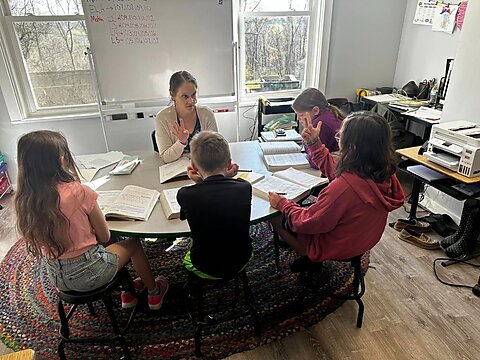Colleen Hroncich
A few years ago, EdChoice released what’s casually known as the Chicken Little report. The official title was a little less catchy and a little more explanatory: Who’s Afraid of School Choice? Examining the Validity and Intensity of Predictions by School Choice Opponents. An accompanying video included snippets dating back to 1999 of choice opponents predicting public schools would be destroyed if parents were given more options. “Despite the predictions of the school choice Chicken Littles, the sky has not fallen,” the report noted.
The Chicken Littles are still at it, as seen in some headlines this summer: “School Vouchers Were Supposed to Save Taxpayer Money. Instead They Blew a Massive Hole in Arizona’s Budget.” “School choice vouchers tanked Arizona’s budget. Could they do the same in Alabama?”
Earlier this week, Arizona Superintendent of Schools Tom Horne released data that contradict claims that universal school choice is destroying the state budget—education funding was $4.3 million under budget for the year. “Having a surplus of more than $4 million is proof positive that the critics who have claimed the ESA [Education Savings Accounts] program will bust not only the state’s education budget but the entire budget itself were always wrong. It was always a myth, and that myth is utterly demolished,” said Horne.
An August 2024 analysis by the nonpartisan Arizona Joint Legislative Budget Committee also found savings, noting the higher-than-expected ESA enrollment was offset by an enrollment drop in district and charter schools. “With the above forecast adjustments, we estimate the total combined district/charter/ESA enrollment will generate savings of $(352,200) in FY 2024 relative to the enacted budget,” the report stated.
The Goldwater Institute’s Matt Beienburg recently detailed the fiscal impact of Arizona’s education savings accounts since they were made universal in 2022. In addition to the above findings, he noted that charter enrollment has flattened as parents opt for the universal ESA. Since charter schools receive more than $10,000 per student in state funding compared to around $7,500 received by ESA students, the shift from charters to ESAs represents a savings.
Beienburg also found that “the entire cumulative increase in spending on ESAs under universal expansion is smaller than the increase in state spending on public schools that state lawmakers authorized over the same period, despite enrollment in Arizona’s traditional public district schools declining in that time.”
These findings from Arizona make sense when you think about how education funding works. Currently, district schools receive funds from local, state, and federal taxpayers. While the breakdown varies by state, less than 10 percent is generally from federal sources with the remainder split between state and local. School choice programs like ESAs and vouchers are funded with a portion of state per-pupil dollars; districts retain all local funds even when children switch to another option.
The state funding for a private choice program is often less than the per-pupil funding that would have been sent to districts or charter schools. Thus, private choice programs typically save state tax dollars. Beyond that, they usually result in an overall increase in per-pupil spending in district schools since districts now have more local dollars to spread among fewer children.
No doubt the Chicken Littles will continue to cluck their doomsday scenarios when it comes to choice. But, as Arizona—the first state to pass a universal ESA—shows, the real-world results don’t match the fear-mongering.



























